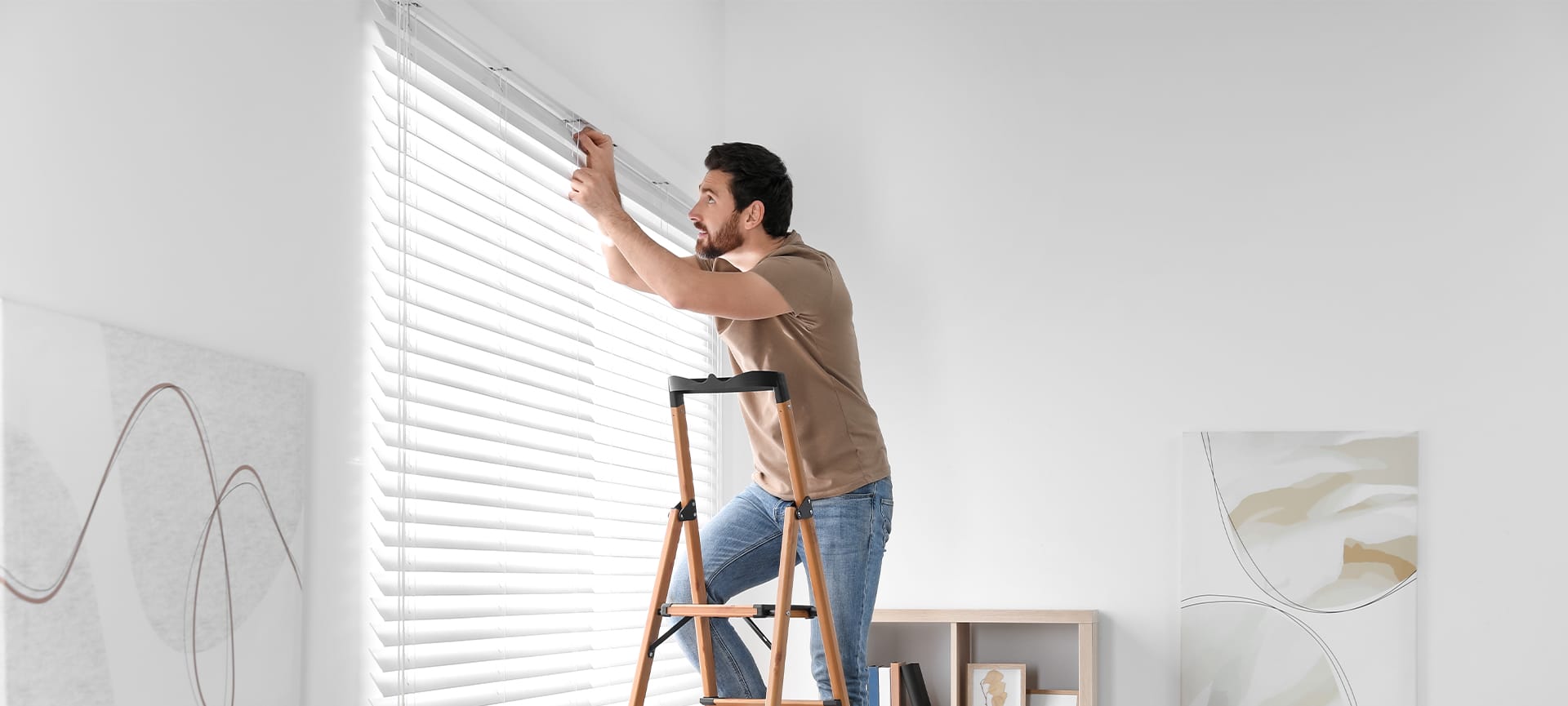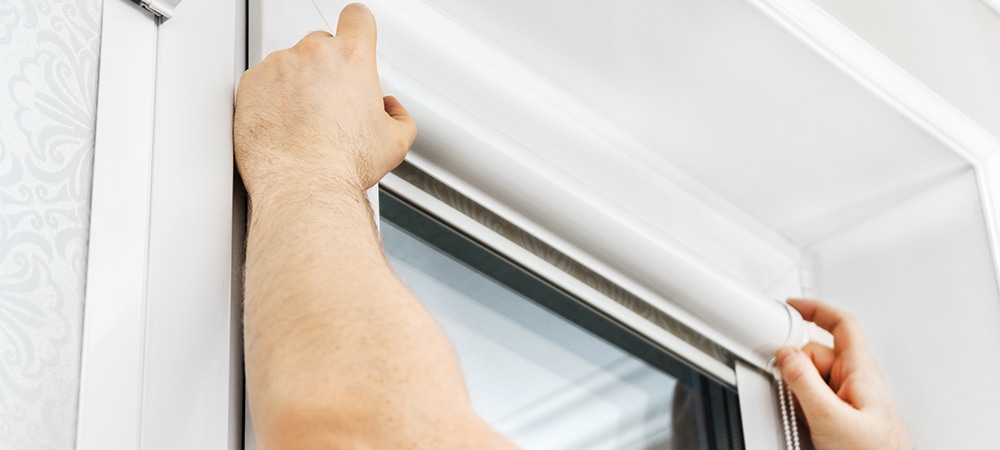How to Install Window Blinds Without Drilling?

Window blinds are a versatile and stylish addition to any home, offering aesthetic appeal and practical functionality. They allow you to control light, privacy, and temperature, creating a comfortable and inviting atmosphere in any room. However, the traditional installation process often involves drilling holes into walls or window frames, which can be a daunting task, especially for renters or those who prefer to avoid causing any damage to their homes.
Fortunately, there’s a solution that combines convenience with style: no-drill blind installation. These innovative methods allow you to hang your blinds securely without needing power tools or permanent alterations to your walls or windows.
Whether looking for a quick and easy DIY project or a damage-free solution for your rental property, the no-drill blind installation offers a practical and effective alternative.
Related Article: Where to Find the Best Window Blinds Installers in GTA
Benefits of No-Drill Blind Installation
The no-drill blind installation offers several compelling advantages, making it a preferred choice for many homeowners and renters.
- No Damage to Walls or Window Frames: No-drill methods preserve your surfaces’ integrity, helping you enjoy beautiful blinds without any lasting marks or the need for repairs when it’s time to move or redecorate.
- Ideal for Renters: If you’re renting your home or apartment, you may face restrictions on making permanent modifications to the property. No-drill blind installation is a renter-friendly solution that allows you to enhance your windows without violating your lease agreement or risking your security deposit.
- Quick and Easy Installation: No-drill methods are typically straightforward and require minimal tools and effort. You can install your blinds in minutes, saving you time and frustration.
- Versatility: No-drill installation is compatible with various blind types, including popular options like roller shades, zebra blinds, and cellular shades. This allows you to choose the perfect window coverings to match your style and needs without sacrificing convenience or ease of installation.
Related Article: How to Install Zebra Blinds: A Comprehensive Guide
Types of No-Drill Blind Installation Methods
Several no-drill blind installation methods offer convenient and effective ways to hang your blinds without causing any damage. Let’s explore a few popular options.
Tension Rods
Tension rods are spring-loaded rods that create pressure between the sides of your window frame, securely holding your blinds in place. They’re a popular choice for lightweight blinds like roller shades or cellular shades, as they don’t require screws or brackets.
Tension rods are also relatively inexpensive and easy to install, making them a great option for DIY enthusiasts. However, choosing the right size tension rod for your window and ensuring it’s properly installed is important to prevent the blinds from slipping or falling.
Adhesive Brackets or Clips
Adhesive brackets or clips offer another no-drill installation option. They utilize strong adhesives to attach to the window frame or wall and support the blinds, providing a secure and stable hold.
When choosing adhesive brackets or clips, it’s crucial to select a product with a strong adhesive specifically designed for use with window blinds. Proper surface preparation, including thoroughly cleaning and drying the area, ensures a solid and lasting bond.
Magnetic Brackets
Magnetic brackets are a unique and innovative solution for no-drill blind installation. They utilize magnets to attach the blinds directly to metal window frames. This method is straightforward to install and remove, making it ideal for renters or those who frequently change their window treatments. Magnetic brackets only suit windows with metal frames.

Step-by-Step Guide to No-Drill Blind Installation
While the specifics may vary depending on the type of blinds and installation method you choose, here’s a general overview of the no-drill blind installation process:
1. Measure and Mark: Accurate measurements are crucial for a successful installation. Carefully measure the width and height of your window opening, following the manufacturer’s instructions for your specific blind type. Mark the placement of your mounting hardware on the window frame or wall using a pencil or marker.
2. Install Mounting Hardware:
- Tension Rods: Extend the tension rod slightly beyond the width of your window opening. Place one end of the rod into the bracket on one side of the window frame, then twist the rod to create tension and secure the other end in the opposite bracket.
- Adhesive Brackets or Clips: Clean the surface of the window frame or wall thoroughly with rubbing alcohol. Peel off the backing from the adhesive bracket or clip and firmly press it onto the marked location. Hold in place for a few seconds to ensure a strong bond.
- Magnetic Brackets: Simply place the magnetic brackets onto the metal window frame, ensuring they are aligned with the marked locations. The magnets will create a secure attachment.
3. Attach the Blinds: Carefully slide the headrail of your blinds into the mounting hardware, ensuring it’s properly seated and secure. For tension rods, make sure the blinds are evenly balanced, and the rod is tight enough to hold them in place.
4. Adjust and Test: Once the blinds are attached, adjust them to the desired height and test their functionality. Make sure they raise and lower smoothly and that the slats or vanes tilt properly. If you encounter any issues, refer to the manufacturer’s instructions for troubleshooting tips.
Specific Tips for Each No-Drill Method
- Tension Rods:
- Choose lightweight blinds that won’t put excessive strain on the tension rod.
- Ensure the tension rod is level and securely placed before attaching the blinds.
- Consider using additional support brackets for wider windows or heavier blinds.
- Adhesive Brackets or Clips:
- Use high-quality adhesive brackets or clips designed for window blinds.
- Clean the surface thoroughly before applying the adhesive to ensure a strong bond.
- Allow the adhesive to cure completely per the manufacturer’s instructions before hanging the blinds.
- Magnetic Brackets:
- Ensure your window frame is made of metal before choosing this method.
- Make sure the magnetic brackets are strong enough to support the weight of your blinds.
- Consider using additional magnets or adhesive for added security if needed.
Refer to the manufacturer’s instructions for your blind type and installation method for the most accurate guidance.
Related Article: Step-by-Step Guide to Measuring Windows for Blinds Installation
Troubleshooting and Tips
Even with the convenience of no-drill blind installation, a few hiccups can occur. Here are some common challenges and how to overcome them.
Uneven Surfaces
If your window frame or wall isn’t perfectly level, it can affect the stability of your blinds. Use shims or spacers to create a level surface for your mounting hardware. This will ensure that your blinds hang straight and operate smoothly.
Adhesive Failure
In rare cases, the adhesive on brackets or clips may fail, causing the blinds to come loose. Choose high-quality adhesive products specifically designed for window blinds and follow the manufacturer’s instructions for application and curing time. If the adhesive does fail, you may need to reapply it or consider using a different mounting method.
Tension Rod Slipping
If your tension rod keeps slipping or the blinds feel loose, try adjusting the tension or adding additional support brackets. You can also use a rubber grip pad or non-slip tape on the ends of the tension rod to increase friction and prevent slippage.
Choosing the Right Blinds
The success of your no-drill installation also depends on selecting the right size and type of blinds for your windows. Measure your window opening carefully and choose blinds that fit snugly within the frame. Consider the weight and material of the blinds, especially when using tension rods or adhesive brackets, to ensure they are adequately supported.

Additional Tips for a Smooth Installation
- Read the instructions.
- Gather your tools.
- Clean the surface.
- Take your time.
- Ask for help.
Related Article: DIY vs. Professional: What You Need to Know About Blind Installation
Embrace the Ease of No-Drill Blinds
No-drill blind installation offers a convenient and damage-free solution for enhancing your windows. Whether you’re a renter, a homeowner looking to preserve your walls, or simply someone who appreciates a hassle-free DIY project, this innovative approach allows you to enjoy the beauty and functionality of blinds without the need for power tools or permanent alterations.
With its versatility, quick installation, and suitability for various blind types, no-drill installation is a smart choice for anyone seeking to elevate their home decor without compromising convenience or style.
Ready to experience the ease and convenience of no-drill blinds? Contact Canadian Blinds Pros today for expert advice and a selection of stylish and functional window coverings.

Just another writer from downtown Toronto. I have worked as a window salesman and a blinds installer so I have a great amount of knowledge in this industry.
Favourite Downtown Restaurant: Lee’s
Blinds of choice: Zebra Blinds
Feel free to share my blogs if you find them useful.